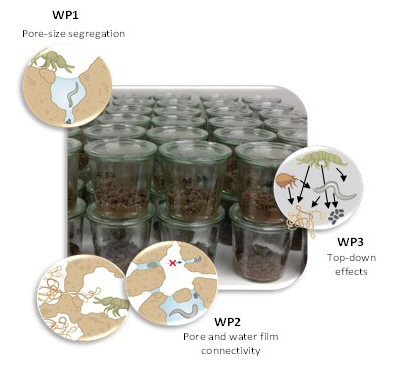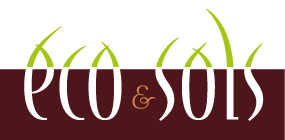 Coupling soil physics and soil food web ecology to unravel how soil habitat structure shape trophic interactions and carbon dynamics
Coupling soil physics and soil food web ecology to unravel how soil habitat structure shape trophic interactions and carbon dynamics
Context
Trophic interactions play a central role in soil functioning and act as an important driver of soil biodiversity. Recent advances in soil food web studies focused on identifying trophic relations with ever increasing precision and on quantifying the energy channelling from basal sources to higher trophic levels. Yet, the main remaining challenge is to unravel what drives trophic interactions. Soil is a highly heterogeneous habitat, strongly constraining the encounter between consumers and food resources. However, quantitative experimental evidence on the impact of restrictions imposed by the soil structure on trophic interactions is scarce.
Objective
The overarching objective of this project is to unravel how the soil habitat shapes trophic interactions and carbon dynamics by focusing on protists, nematodes and microarthropods as major microbial consumers.
In addition, I will explore feedback effects of trophic interactions on microbial communities at the pore scale and on microbial hotspot characteristics.
Main activities
This interdisciplinary project merges soil physics, soil food web ecology and soil microbial ecology. It is divided in three work packages (WPs).
- (WP1) The aim of WP1 is to unravel how size-based segregation of consumer and prey in soil pores act as determinant of the accessibility of food resources to higher trophic level consumers and to explore the consequences for soil microbial community composition at the pore scale and overall carbon fluxes. This experiment will provide detailed understanding of pore size restriction for food resource accessibility and highlight trophic regulations of the microbiome at the pore scale.
- (WP2) The aim of WP2 is to test how the connectivity of pores and the continuity of air-filled and water-filled pores define the relative importance of bottom-up vs. top-down control in soil food webs. Resulting changes in soil food web structure will quantitatively assess how habitat connectivity drives complex trophic interactions.
- (WP3) The objective of WP3 is to investigate how trophic interactions shape the structure and functioning of soil microbial hotspots. Overall, this project will pave the way for a mechanistic understanding of the role of the soil habitat structure in soil ecology.
Keywords
Soil food web, soil microhabitat, water matric potential, soil microbial hotspot, soil pores, nematodes, microarthropods, protists
Partners
Dr. Amandine Erktan, UMR Eco&sols, Montpellier, France (PI);
Dr. Jing-Zhong Lu, Soil ecology group, University of Goettingen (post-doc), Germany;
Prof. Dr. Scheu, animal ecology group, University of Goettingen, Germany;
Dr. Naoise Nunan, iEEs Paris, CNRS, Paris, France;
Dr. Mohsen Zare, University of Bayreuth, Germany;
Dr. Bahar Razavi, University of Kiel, Germany
Localization
University of Goettingen, Germany
Funding
DFG (Deutsche Forschungsgemeinschaft) ![]()
Duration
2021 – 2025 (36 months)
Contact and information
Amandine Erktan, UMR Eco&Sols, IRD,






